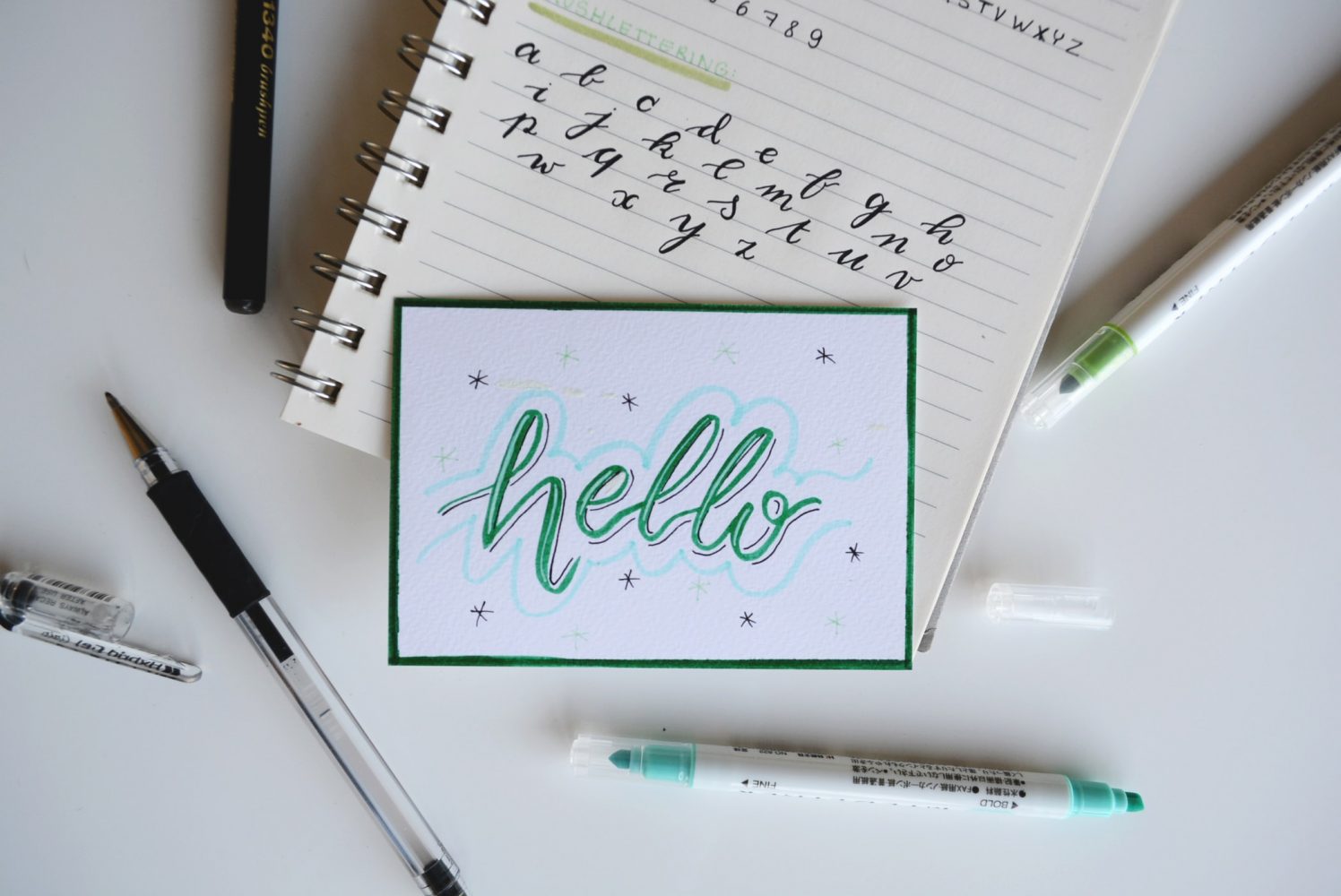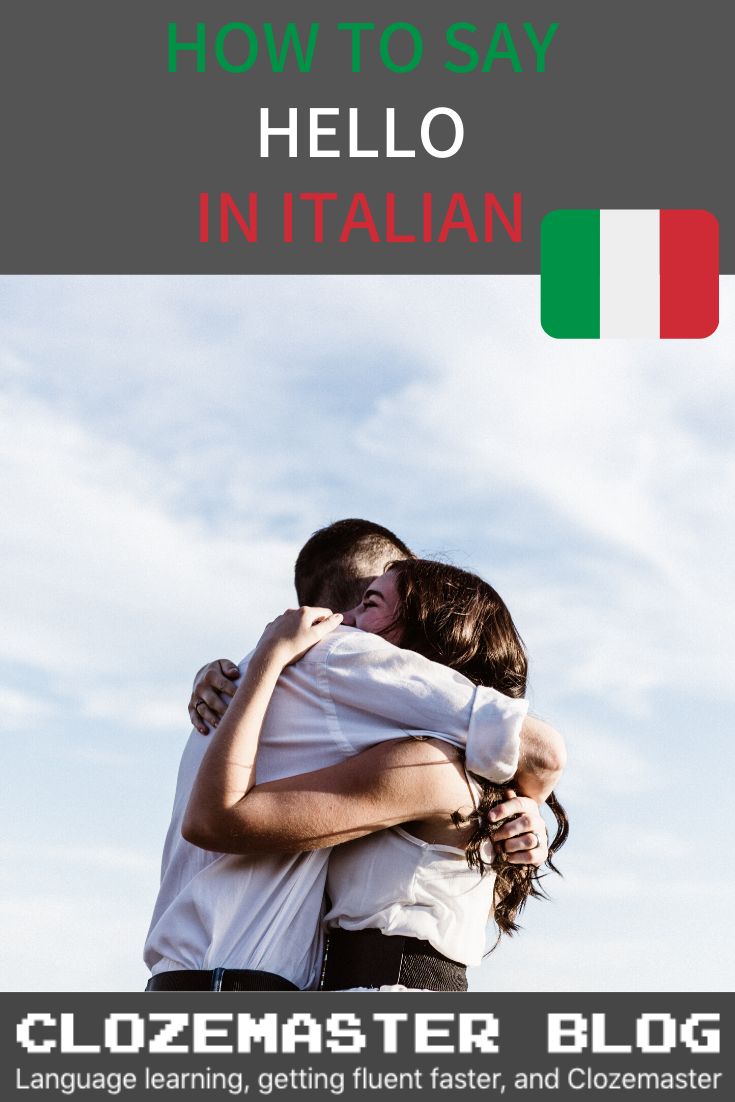
Do you want to learn how to say “hello” in Italian? In this lesson we’ll see all the different greetings, so you will learn more than just a simple “ciao”!
Italian people put a great emphasis on the so called “buone maniere”, the good manners. It is very important in Italy to address people with the right salutation according to the time of the day and the type of relationship you have with them.
We’ll see all the different Italian greetings, so you’ll be able to greet people appropriately during your next trip to Italy!
How to say Hello in Italian
Even if you’re at a beginner level you will surely know that the most common way to say “hello” in Italian is “ciao”. Ciao is a friendly greeting which you can use every day. The equivalent of ciao in English is “hello”.
Ciao! (pronunciation)
Hi, hello
Ciao is used in many situations, meaning both “hello” and “goodbye”, but mainly in informal settings, i.e., among family members, relatives, and friends. It sounds inappropriate in formal contexts, for instance when greeting elder people, your boss at work or someone you don’t know very well.
Saying Good morning, Good afternoon, and Good evening in Italian
If a simple ciao doesn’t seem enough, you can use different greetings according to the time of the day. Saying “good morning”, “good afternoon” or “good evening” is a safer bet when greeting someone you’re not very close to, or when entering a shop or restaurant.
Buongiorno (pronunciation)
Good morning
Buon pomeriggio (pronunciation)
Good afternoon
Buonasera (pronunciation)
Good evening
Buonanotte (pronunciation)
Good night
Buongiorno (good morning) is a very good way to greet someone, because it’s appropriate in both friendly situations and formal contexts. Sometimes you can also hear its shortened form “buondì”. Buondì has the same meaning, with “buon” meaning good and “dì” meaning day.
Buon pomeriggio is a formal greeting for the afternoon time. It is not as commonly used as buongiorno and buonasera, many people in fact don’t say it at all and replace it with one of those two greetings.
Buonasera is another greeting which can be used either in formal and informal situations. It is used when meeting someone in the evening, however, the ideal time of the day to use buonasera varies greatly from region to region. Usually, people start saying buonasera after 2/3 pm.
The last one is buonanotte (good night): a formal and informal greeting, used to say goodbye before going to sleep.
When to use Buongiorno, Buon pomeriggio and Buonasera?
In different areas of Italy we go from good morning to good evening at different times of the day. In southern Italy people can start saying buonasera around 4-5 pm, while in northern Italy you can even hear it around 2pm!
Generally, in Italy you can start saying buonasera after lunchtime, when in English it would be really unusual to say good evening. As we’ve seen before, buon pomeriggio (good afternoon) is almost never used, so people tend to switch directly from buongiorno to buonasera.
How to say Goodbye in Italian
We’ve seen many different ways to say “hello” in Italian, but how to say “goodbye”? In informal contexts, you can just use a friendly “ciao”. Depending on the situations, you can use other different greetings to say goodbye to people. Let’s look at each one by one:
- Arrivederci: It is a formal way to say goodbye, only used when you leave (and not when you meet a person). Its meaning is that you wish to see someone again soon. You use it with people you are not quite familiar with, or elder people. A variant is “arrivederla”, which is even more formal and expresses a tone of respect.
- Ti saluto: It literally means “I salute you” and it’s a quick and informal way to say goodbye to a person you know well.
- Ci si vede: It’s an informal greeting used mostly among young people, which means “see you around”.
- Buona giornata: another common way to tell someone goodbye is by saying buona giornata, which literally means “good day” and is the equivalent of the English “have a good day”. You can use it in both formal and informal contexts to sound polite and friendly with anyone you meet. After 4/5 pm, however, the day is almost over so you should use buona serata, which means “have a good evening”.
If you’d like to learn more about parting words in Italian, be sure to check out our post Goodbye in Italian: All the Parting Words You Need to Know!
Greeting elders and superiors
When greeting elder people or your superiors you cannot use ciao – you need to sound more formal. Before discussing the different greetings, I would like to give you a little introduction about how to address somebody in Italian.
Similarly to Spanish and French, Italian has two ways to address people: informally and formally. The informal way uses the personal pronoun tu, while the formal way uses lei.
We use lei to politely address somebody who is older than us and who we don’t know very well, otherwise the older person could be offended. Lei is third person singular, so when addressing someone formally, you need to conjugate the verb in the third person. Let’s see the difference:
Ciao Marco, (tu) come stai?
Hello Marco, how are you?
Buongiorno dottor Rossi, (lei) come sta?
Good morning dr. Rossi, how are you?
Ciao Marco, come stai? Questa è tua madre? Buongiorno signora, come sta?
Hello Marco, how are you? Is this your mother? Good morning Mrs. Bianchi, how are you?
If you want to learn more about the formal use of the third person in Italian, you can take a look here. When greeting elder people, people who you don’t know or who you have just met (be it in a business meeting or any other occasion) your safest bet is arrivederci. Avoid “ciao” or “ci vediamo”. Use one of the following instead:
Arrivederci, buona giornata!
Goodbye, have a nice day!
Arrivederci, le auguro una buona giornata!
Goodbye, I wish you a nice day!
È stato un piacere!
It’s been a pleasure! (meeting you)
In written communications such as e-mails, you can close your message with one of these, if the tone is formal:
Cordiali saluti
Warm regards
Cordialmente
Warmly, cordially
While in informal e-mail texts you can write:
Saluti
Regards
A presto
See you soon
Con affetto
With love
Other ways to say Hello in Italian
There are of course other ways to greet people in Italian. Let’s see a few more, so you’ll be able to use each one properly and sound natural in every social situation.
- Salve: This is a conventional, formal greeting which comes from the Latin word “salvus”, meaning healthy, safe. The tone of this greeting is neutral. It was once used as a way to wish someone good health, while today it is mostly used when the speaker is uncertain about which register to use, formal or informal. It is definitely more formal and can be used at all times of the day with people you don’t know well or you don’t know at all.
- Benvenuto: it means “welcome” and is used to greet people that come to visit us. You can often hear it when you enter a shop.
- Pronto: this is what Italian people say when they answer the phone. It means “ready” and is used to convey the meaning that you’re there to listen to whoever is calling you
- Alla prossima: it means “see you next time” and is a friendly and casual way to say goodbye to friends, and even to people you’re not familiar with.
- Addio: has a negative meaning, because it used to greet someone that you know you will never see again. In fact, it means something like “I recommend you to God”. You will probably hardly hear it, as Italian people don’t like to highlight that it’s the last time they see someone for a very long time, perhaps forever.
When you don’t know what to say, keep in mind that you can simply use salve and arrivederci, and you’ll be polite and correct in any circumstance.
When greeting people in Italy, keep in mind that words are important, but so are gestures. Italian people like to greet and to express hospitality and happiness with body language too. Friends greeting each other in Italy usually kiss twice on the cheeks, or give each other a warm hug.
This may sound a little weird for those who have a very strong sense of personal space, or for those who come from countries where people don’t usually do this! It’s not rare in Italy to kiss or hug, but only if you have a friendly relationship, or with family members. This double kiss is used both when you meet someone and when you say goodbye,
If you feel that gesture would be inappropriate, a hand shake works just fine. You can shake hands with people you meet for the first time, saying piacere di conoscerti (nice to meet you). You can also shake ends to say goodbye.
Summary
Are you ready to say “hello” to your friends in Italian? In this article we covered the most common salutations, so the next time you’ll be in Italy you will surely be able to surprise people by greeting them properly and politely.
Arrivederci a presto!
Learn Italian in context with Clozemaster
Clozemaster has been designed to help you learn the language in context by filling in the gaps in authentic sentences. With features such as Grammar Challenges, Cloze-Listening, and Cloze-Reading, the app will let you emphasize all the competencies necessary to become fluent in Italian.
Take your Italian to the next level. Click here to start practicing with real Italian sentences!


